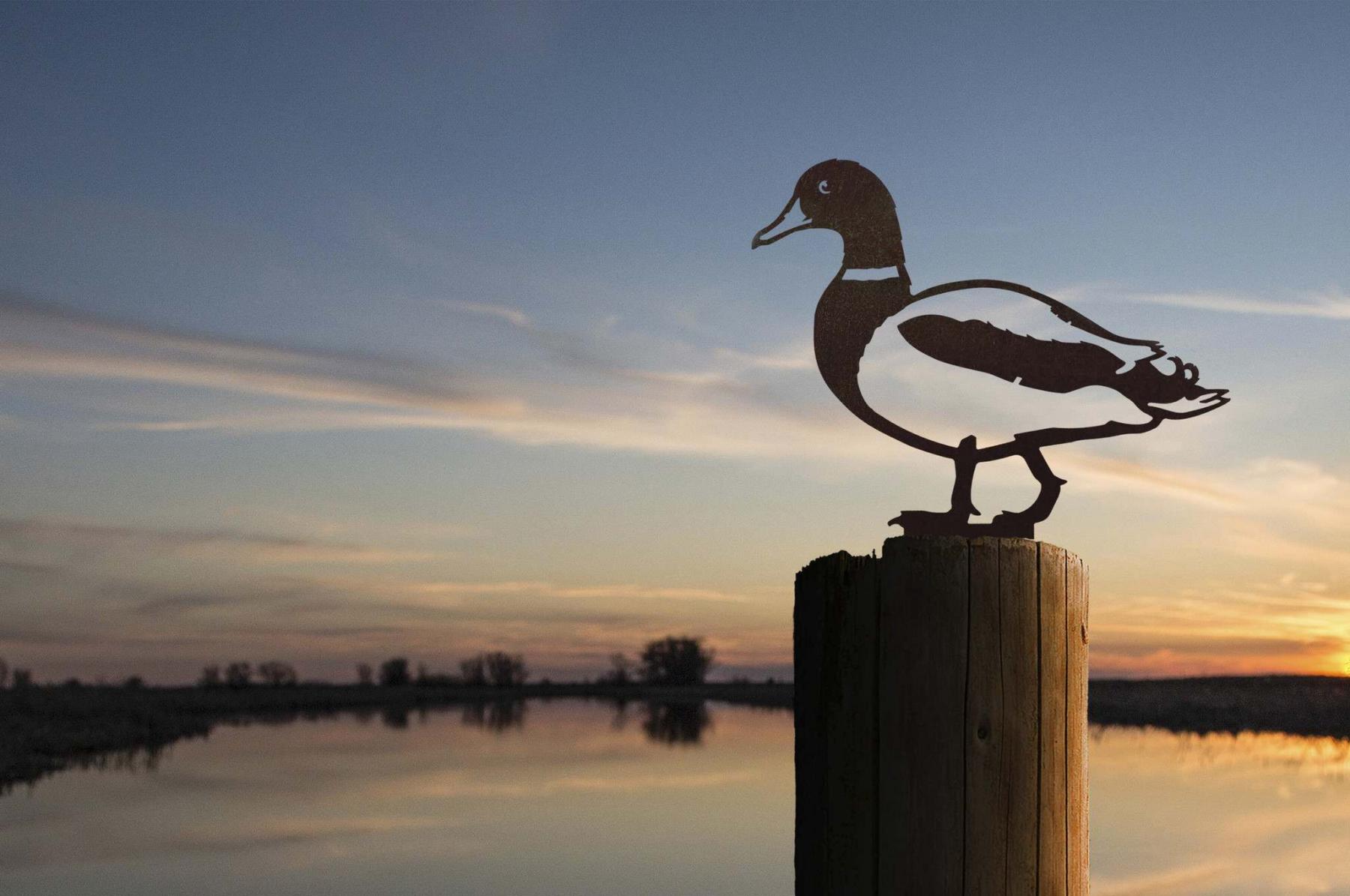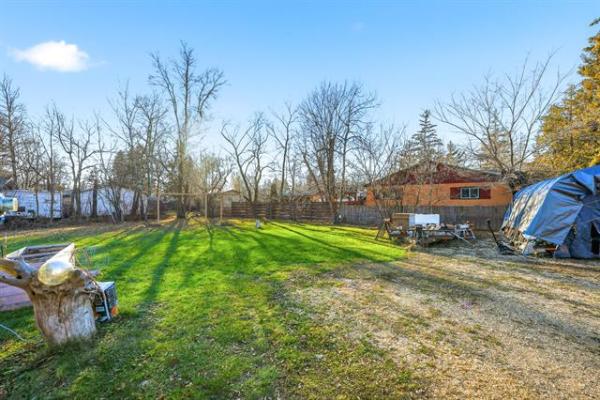
Metalbird / supplied photos
Phil Walters, founder and creator of Metalbird, in his studio.
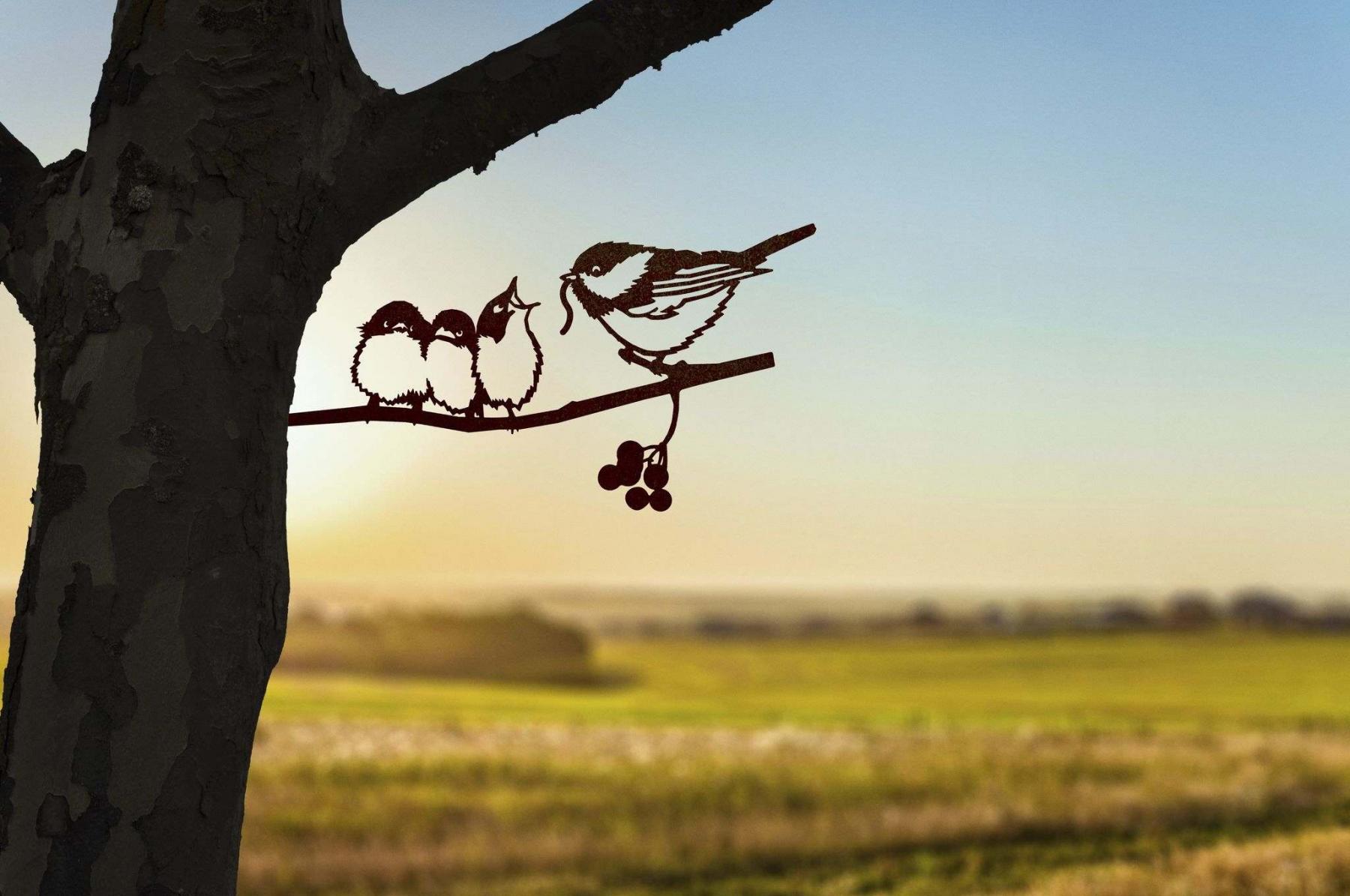
A tree is a perfect spot for this Metalbird Chickadee family. Simply tap, tap, tap it in with your hammer.
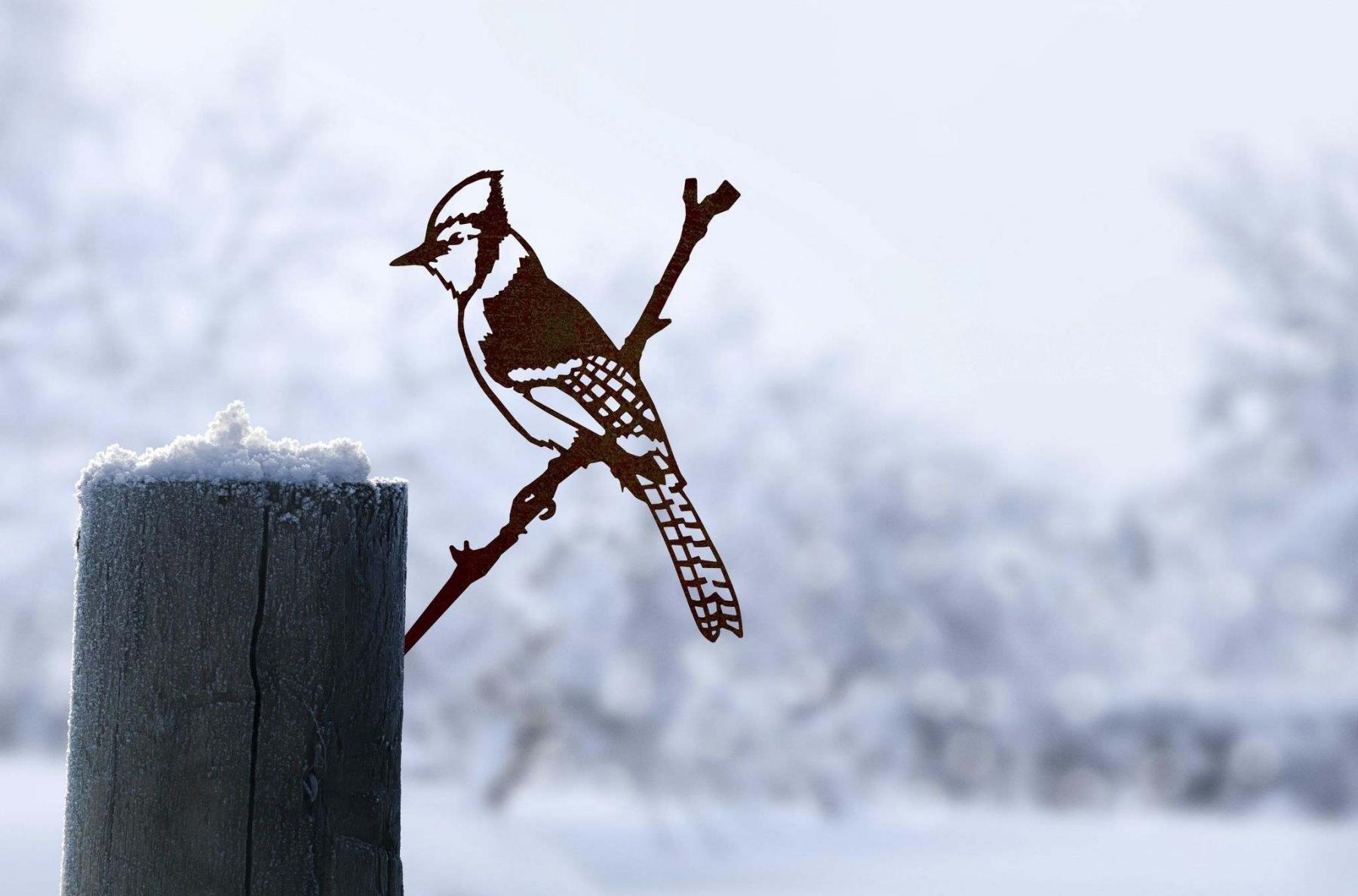
Metalbird products are made from Corten Steel to withstand any climate and develop a rusty patina.
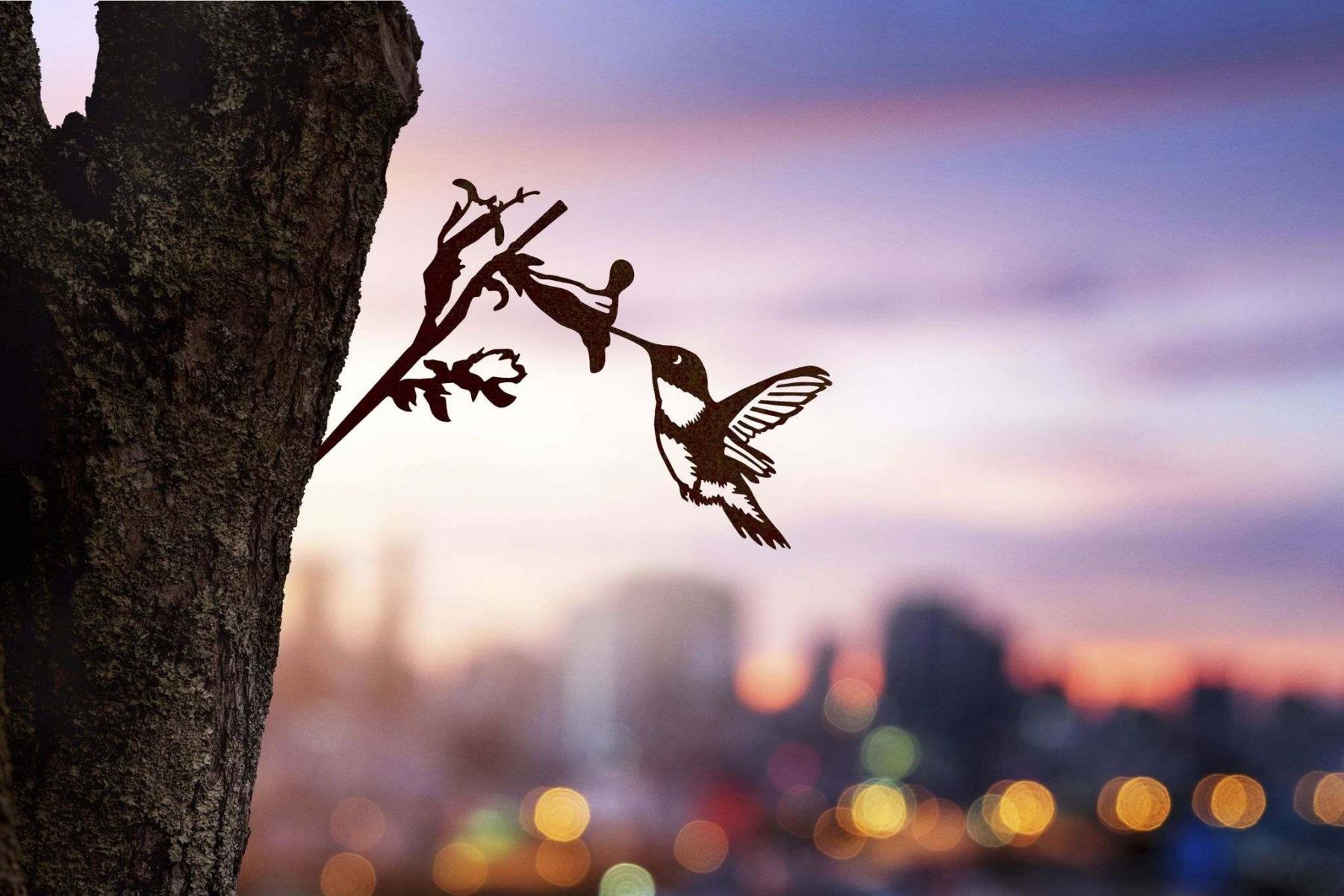
The iconic hummingbird has universal appeal.
Metalbird has landed in Canada. Offering uniquely designed native birds crafted as life-sized metal silhouettes, Metalbird was started in 2009 by Phil Walters in his New Zealand backyard. Today Metalbird has manufacturing plants in several countries around the world — New Zealand, Australia, Italy, France, Germany, Scandinavia, the U.K., United States, and now, Canada. In 10 short years, Metalbird has become a global art project.
Walters celebrates the relationships between people and birds. Wherever he goes, Walters creates iconic, beloved types of birds that are native to a continent or single country. In each of the different locations around the world, the metal birds are produced locally and ethically by family-owned businesses. Here in Canada, Metalbird’s newest factory is in Montreal.
This week, on June 9, Metalbird Canada launched a beautifully crafted Mallard and announced a new collaboration with Ducks Unlimited Canada. Twenty per cent of the proceeds from each purchase of a Metalbird Mallard will go directly to the conservation efforts of Ducks Unlimited Canada.
Walter’s personal quest is to create a nature connection that resonates and brings joy to people, transforms their environment through the artistic act of tapping a steel bird sculpture into a post or tree, but also gives voice to native birds by highlighting and supporting local bird conservation efforts. Made from Corten Steel which is weathering steel designed to develop a rich, protective rust patina on its surface naturally over time, the metal birds are designed to last for decades outdoors in even the most extreme climates.
Recently Walters talked to me on Zoom from his home in New Zealand.
"Metalbird comes unashamedly out of a hobby and a graffiti art project that I was doing in my local neighbourhood here in Auckland in 2009," said Walters. "At the time I was married to a beautiful woman who was a photographer and she was prolific in producing art based photography and exhibiting it."
An industrial designer by profession, Walters worked in New Zealand, Europe, and North America and enjoyed an interesting career where he excelled at manufacturing — asthma inhalers, a bus for Mercedes, toothbrushes for American companies, and so forth. The idea of doing something more creative appealed to him. While visiting the U.K., Walters was inspired by the approach and pluck of Banksy, the British street artist. "I always wanted to do something that was a bit whimsical and to surprise, delight, and intrigue people," said Walters. But he also had a mission to create a meaningful project that would make a positive difference.
Walters began creating sketches and cutting out bird silhouettes from steel in his backyard shed on the weekends. The steel was left over from the shop fitting and interior systems that he designed as part of his job.
As the metal birds were completed, Walters would go around his neighbourhood in the evenings with his children and hammer the birds into lamp posts, power poles, and trees, creating jewel-like effects to be discovered and enjoyed by passersby.
In 2012, his wife, Helena, died from cancer. Walters, along with his two young children, began placing the metal birds in all the places they used to go as a family — parks, restaurants, cafes, schoolyards. The small memorials helped to give them healing and closure, said Walters.
The art-based project started to grow and the birds began appearing in gift shops. "I would pay my kids 50 cents to put the birds in a box and stick them on a shelf," he said. In 2017, Walters made a leap of faith and quit his day job as an industrial designer. He invested money into his project, made 50 or so birds of different types using state of the art laser cutting, put them in the trunk of his car, and drove off one summer holiday.
"Metalbird started with one bird in one tree in one garden. We were very keen to take this to the world." Walters, who had numerous friends and business contacts in parts of the world where he had lived and worked throughout his career, started having conversations about expanding his art project globally. The conversations also centred around bird conservation. "It’s something important to me personally and it’s important to us as a business to give back significantly," said Walters. "In every market where we operate, there are two areas we actively support: bird conservation and cancer research."
From New Zealand, Metalbird expanded to Australia and then Amsterdam, followed by other European countries. In 2018, Metalbird launched in the U.K. and in 2019, North America. Metalbird has five manufacturers in the U.S. so last Christmas the birds were shipped into the Canadian market from its factory in Utah. The metal birds will now be produced in Montreal and shipped anywhere in Canada in envelope-type packaging made from recycled cardboard with biodegradable inks. The Corten steel itself is made with over 70 per cent recycled content. All scrap steel from Metalbird’s manufacturing process is recycled.
The very first bird handcrafted by Walters was a huia, New Zealand’s most widely recognized extinct bird. A sacred treasure to Maori, the indigenous people of New Zealand, the huia, prized for its white-tipped plumage, were hunted in large numbers for overseas museums and collectors.
Metalbird has a very close relationship with Forest & Bird, New Zealand’s leading independent conservation organization. It also collaborates with American Bird Conservancy and now its newest collaboration is with Ducks Unlimited Canada.
Fascinating descriptions of the distinctive characteristics of each of the native birds in locations around the world can be found on Metalbird’s different websites. Learn about the Black-tailed Godwit, a rare breeding bird that was chosen by the Dutch public in 2016 as its national bird or the Fantail in New Zealand, Kookaburra in Australia, and more.
Some types of birds, like robins, owls, wrens, blue jays, chickadees, and hummingbirds, have vast appeal. The hummingbird, no surprise, is a top seller. Interestingly, there are no hummingbirds in New Zealand.
"We’re in the business of delivering icons into the marketplace," said Walters. "We are just so excited to be in Canada. We were foiled initially because we couldn’t set up our manufacturing plant due to the pandemic and restrictions on international travel." Walters plans to come to Canada when travel restrictions related to the COVID-19 pandemic are lifted. He is interested in learning more about Canada and Canadians and how we see ourselves. "What resonates? What’s important to Canadians and how do we capture that and deliver it locally and support local business?"
The perfect spot for installing your Metalbird is in a post, fence, tree, shed or wooden wall. Simply tap, tap, tap it in with a hammer. Don’t worry that it could damage your tree. Arborists that Metalbird has worked with believe that when the spike is driven firmly into a tree, the tree will seal around the hole to protect itself from disease. Wherever you choose to display your nature-inspired steel bird, make sure it will be silhouetted against the clear sky or a light single colour. You are the artist, says Walters.
To learn more about Metalbird Canada and view the birds, visit www.metalbird.ca.
colleenizacharias@gmail.com

